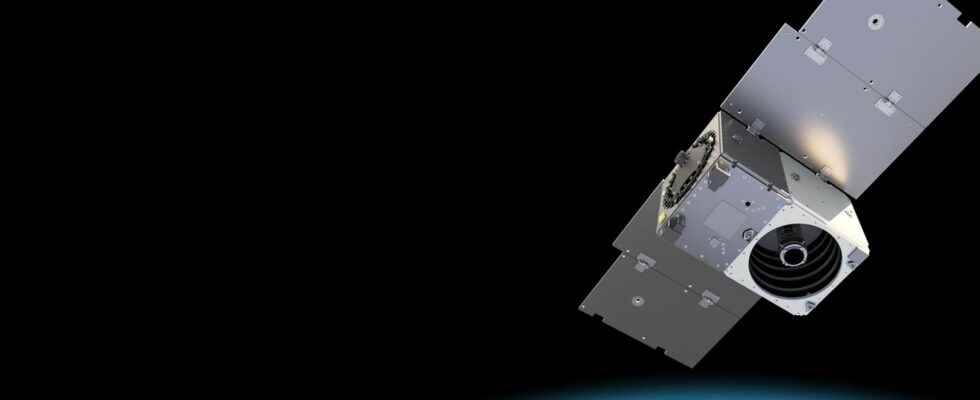The usefulness of Earth observation data no longer needs to be demonstrated. Planet, one of the main providers of satellite imagery, has understood this well. The Californian firm, which has the largest fleet of observation microsatellites on our Planet, should commission Pelican, a new very high-resolution constellation, in 2023. Robbie Schingler, co-founder of Planet and director of strategy, we explains the strengths of the Pelican satellites.
You will also be interested
[EN VIDÉO] How many satellites revolve around the Earth? 2,787 satellites were operational as of December 31, 2020 according to the UCS (Union of Concerned Scientists) association, more than half of which were launched by the United States. Three quarters of the satellites in operation revolve in low orbit (between 500 and 2,000 km altitude), and are used for telecommunications systems, terrestrial imaging or meteorology.
the conflict in Ukraine and the different natural disasters which touch the Earth have shown all the interest and usefulness of constellations deprived ofearth observation. Planet, one of the major players in satellite imagery and data, has unveiled a new constellation which should be put into service during the course of next year.
Pelican, as it is called, was designed to quickly capture changes as they unfold with a resolution of only 30 centimeters, a revisit frequency and a higher spatial resolution than the current constellation. Both access and delivery of images and data will also be faster. We give the floor to Robbie Schingler, co-founder of Planet and Chief Strategy Officer.
Futura: With the conflict in Ukraine, has Planet identified new needs for Earth observation?
Robbie Schingler: the Pelican constellation was announced long before the conflict in Ukraine, but the war has certainly underscored the criticality of daily global satellite data. This data acts as a eye blind”, and give the world access to what was once held only by governments, thus promoting greater global security and accountability.
Futura: You announce 12 revisit possibilities per day: should we understand 12 passages above the same point?
Robbie Schingler: Yes, and up to 30 possibilities per day at latitudes averages. This high revisit frequency will be possible thanks to the 32 satellites that will make up the Pelican constellation.
Futura: How will Pelican compare to the competition (Maxar or Pléiades Neo from Airbus)?
Robbie Schingler: Planet’s interoperable constellations and analytical products firmly differentiate us from our competitors. Using both PlanetScope daily monitoring of the Dove constellation and high-resolution imagery from Pelican, a customer can perform ” Tip & Cue (tips and tricks) fast and unmatched in one platform. In addition, our agile, vertically integrated manufacturing process means we can affordably build a fleet of satellites that can go from concept to orbit in a fraction of the time it would take the competition.
Futura: Will Pelican meet needs that the current SkySat constellation could not address, or offer new services?
Robbie Schingler: Pelican will replace and enhance the current SkySat constellation as it comes online in the coming years. This new constellation will expand Planet’s ability to capture fast-paced and emerging in great detail. This data will be particularly well suited to current and new customers in the emergency response, civil government, defense and intelligence sectors, where fast and accurate information is most important.
Futura: What examples can you give us?
Robbie Schingler: The Pelican constellation responds in particular to the needs of emergency response actors and organizations who need to have near real-time monitoring, to mobilize even more quickly the means to be deployed on the ground, and thus improve their time. of responsiveness. Pelican’s new capabilities are also particularly well suited to civilian government, defense and intelligence customers – where the need for fast and accurate information is greatest.
Futura: What characteristics can you give us (image swath, predicted spectral bands, optical or radar, etc.)?
Robbie Schingler: We do not share other details than what is indicated in the press release: up to 30 cm of resolution, compared to 50 cm with SkySat satellites. But yes, the images of Pelican will only be made in the visible.
Futura: The new satellites will be built by Planet; their electric motor too? And with technological innovations?
Robbie Schingler: Planet will build the satellites in-house, in San Francisco, using parts sourced from suppliers.
Futura: What strategy is planned to deorbit these satellites at the end of their life or in the event of a breakdown?
Robbie Schingler: As with all of our satellites, we are committed to proactively retiring Pelican satellites, adhering to space exploration best practices and space debris regulations.
Interested in what you just read?
